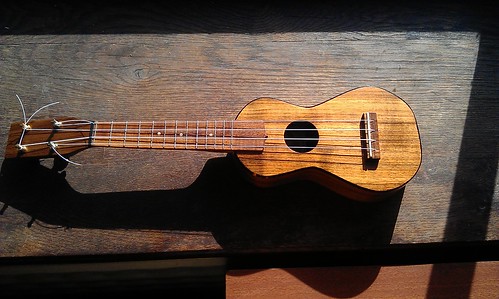The squeeze-out is probably intentional. I've heard of it being used as a sort of miniature lining on old baroque guitars and such. Hide glue is brittle, but at such small size would probably be fine. And even if it does form a few cracks over time, it's still no worse than kerfed linings/dentellones with spaces between them.
I have thought about doing a braceless uke back... but if I'm understanding properly, there was a full "square" brace at the waist, that glued to the top, sides, and back in this uke you're talking about? I do that at the upper bout on my guitars (big upper transverse brace on both plates, with minimal tapering at the ends, and decently hefty side braces that connect the two). I do it to stabilize the neck angle. Not sure what benefit there would be to such a structure at the waist.
I wonder if the back would be less likely to split with no braces glued to it at all though, since it's having stuff glued cross grain to one side and not the other that induces curvature when the humidity changes.
You might be able to get away with a fully braceless top too, if you use carbon fiber buttresses going from the top side of the headblock to the back side at the waist, and put soundholes beside the fingerboard instead of in the middle of the soundboard. But that forms two triangles consisting of the CF rods, headblock, and the back... and an unbraced back is definitely the weakest link in there, so you might need a cross brace on the back at the wide part of the upper bout to prevent it from deforming and allowing the headblock to rotate. And one across the waist where the CF rods attach, if you want to be really safe.
Definitely easier to put a cross brace on the top at the wide part of the upper bout, and L shaped headblock connecting to it, to take most of the neck torque. And if you put soundholes beside the fingerboard extension, you could do away with all other soundboard braces.
And I agree, plasticky finish = ick, and tiny bridge in the middle of a large plate just looks weird, even if it is structurally fine. Give that thing some Red Bull
![Uncle [uncle]](./images/smilies/surrenderflagqv6.gif)



